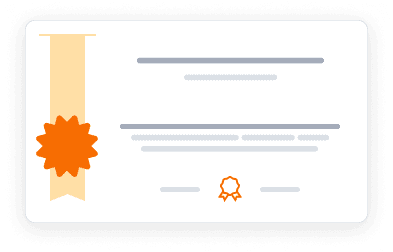Learn to process and analyze neuroimaging data using R, focusing on structural MRI manipulation and visualization.
Learn to process and analyze neuroimaging data using R, focusing on structural MRI manipulation and visualization.
This course cannot be purchased separately - to access the complete learning experience, graded assignments, and earn certificates, you'll need to enroll in the full Neuroscience and Neuroimaging Specialization program. You can audit this specific course for free to explore the content, which includes access to course materials and lectures. This allows you to learn at your own pace without any financial commitment.
4.6
(301 ratings)
23,900 already enrolled
Instructors:
English
پښتو, বাংলা, اردو, 2 more
What you'll learn
Read and write NIfTI format brain images
Perform inhomogeneity correction and brain extraction
Implement image registration techniques
Visualize and explore neuroimaging data
Process multi-sequence MRI scans
Skills you'll gain
This course includes:
4.6 Hours PreRecorded video
26 quizzes
Access on Mobile, Tablet, Desktop
FullTime access
Shareable certificate
Get a Completion Certificate
Share your certificate with prospective employers and your professional network on LinkedIn.
Created by
Provided by

Top companies offer this course to their employees
Top companies provide this course to enhance their employees' skills, ensuring they excel in handling complex projects and drive organizational success.





There are 4 modules in this course
This comprehensive course teaches neuroimaging data analysis using R programming. Students learn to manipulate and process structural MRI data, covering key topics like image formats, visualization, and processing pipelines. The curriculum includes inhomogeneity correction, brain extraction, image registration, and interactive data exploration. Practical skills are developed through hands-on experience with NIfTI format data and neuroimaging software packages.
Introduction
Module 1 · 1 Hours to complete
Neuroimaging: Formats and Visualization
Module 2 · 4 Hours to complete
Image Processing
Module 3 · 5 Hours to complete
Extended Image Processing
Module 4 · 6 Hours to complete
Fee Structure
Instructors
Innovator in Neuroimaging and Biostatistics
Dr. Elizabeth Sweeney completed her PhD in Biostatistics at the Johns Hopkins Bloomberg School of Public Health, under the mentorship of Dr. Ciprian Crainiceanu and Dr. Russell Shinohara. Her doctoral research significantly advanced neuroimaging data analysis, resulting in multiple publications, presentations, and patents. Elizabeth's interest in neuroimaging began during a traineeship at the National Institute of Neurological Disease and Stroke, where she researched image analysis in multiple sclerosis. Passionate about research and teaching, she has co-taught various tutorials on neuroimaging data analysis and led an introductory biostatistics course for MPH students at the American University of Armenia. Currently, as a Rice Academy Postdoctoral Fellow at Rice University, she focuses on developing neuroimaging, epidemiological, and genetic biomarkers in Alzheimer's disease under the guidance of Dr. Genevera Allen and Dr. Joshua Shulman.
Leading Biostatistician and Medical Technology Pioneer at Johns Hopkins
Dr. Ciprian M. Crainiceanu serves as a Professor at Johns Hopkins Bloomberg School of Public Health, where he has been since earning his PhD in Statistics from Cornell University in 2003. As co-founder and leader of the Statistical Methods and Applications for Research in Technology (SMART) research group, he specializes in analyzing complex data from medical technologies. His research focuses on clinical brain imaging, particularly MRI studies in Multiple Sclerosis and CT in stroke cases, along with wearable computing applications including accelerometers, heart rate monitors, and GPS devices. His innovative work bridges the gap between advanced statistical methods and practical medical applications, making significant contributions to the field of biostatistics and medical research.
Testimonials
Testimonials and success stories are a testament to the quality of this program and its impact on your career and learning journey. Be the first to help others make an informed decision by sharing your review of the course.
Frequently asked questions
Below are some of the most commonly asked questions about this course. We aim to provide clear and concise answers to help you better understand the course content, structure, and any other relevant information. If you have any additional questions or if your question is not listed here, please don't hesitate to reach out to our support team for further assistance.





